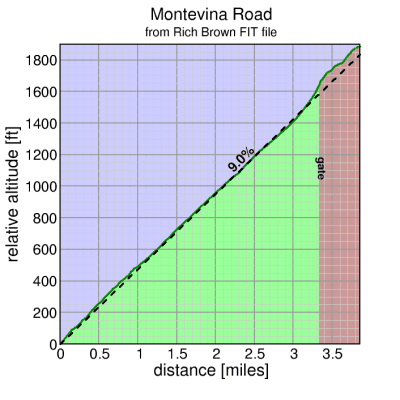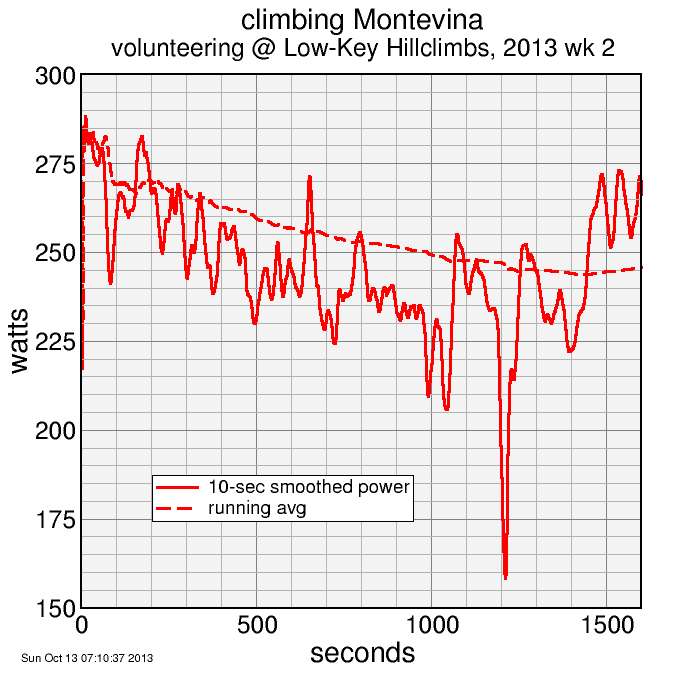working Low-Key Hillclimbs week 2: climbing Montevina
After coordinating week 1 of the Low-Key Hillclimbs last week, I was a volunteer for week 2, with the role of taking split times where the course transitioned from paved to dirt. It was a fun climb, mostly on paved Montevina Road, but then the riders traversed a barrier and continued the last half-mile on fire road.

To get there, I of course rode. So with a small backpack and on my trusty steel Ritchey Breakaway, I set off ahead of the riders to be in position before the leaders arrived.
This was to be my longest hard climb effort by a factor of two since I injured myself, and came after riding to work on back-to-back-days, that coming after a hard workout in the gym and physical therapy. Hardly what would be classified as a "pre-competitive taper". But despite this, I went out at a power pace (around 280 W avg) which would have been solid for me up Old La Honda, a substantially shorter climb than Montevina, at my peak fitness. Not surprisingly, this didn't last, and I faded. I managed to catch the fade and settle into something around 240 watts, which I sort of held, with one serious hiccup where I almost took a wrong turn and needed to loop around, until the steep stuff approaching the gate. For the finish, it was a simple exercise in survival, trying to keep my 36/26 turning.

Of course, despite all sorts of reasons this shouldn't be considered my best possible effort on this climb, my immediate response is "I'm too old to climb well anymore." But the rational self says, even if that's true, this doesn't show it. Training really works, and as I've noted here, my volume has been way lower than it was before the crash. And you're not going to whip out an amazing climb your first time trying anything close to Montevina's 500 paved vertical meters.
I'd like to be decent in three weeks, which should be the first one I ride for real.
The actual work of recording split times went well. I used the Android Ultrachron app. It's principal weakness is it's too easy to hit the "stop" button on the touch screen. I did this twice. The first time was when holding the phone before the first rider arrived. The second time was after the second rider arrived when I accidentally hit "stop" instead of "lap". As a result of the first, I had to restart the timer with the first rider, then sync with the finish line stopwatches after all riders had passed. In the second instance, I estimated it was 1.0 seconds between when I hit "stop" and then "start" again, so I adjusted times on this assumption. A good event-based timing app would just have a "lap" button, with "stop" a menu option. But overall it went well, except I missed one number, which I later got from the video camera we had set up there.
Sometimes taking split times means doing a bit extra for the riders. Here's a shot of Marco and Ruth on their most excellent Calfee custom tandem:
Comments